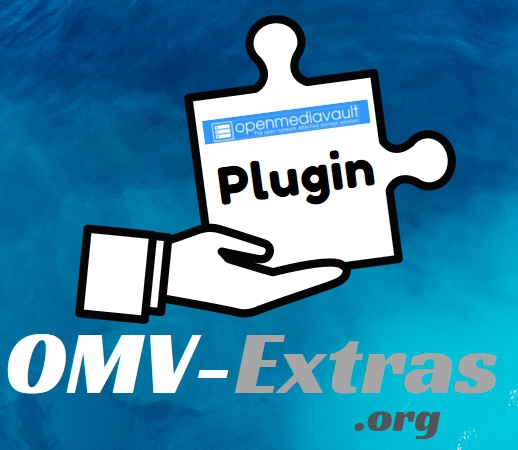FlashMemory Plugin For OMV7
Summary
The FlashMemory Plugin was designed to make booting from USB thumbdrives and SD-cards feasible and a practical
alternative to booting from a hard drive or SSD. In addition to the relative low cost, using USB thumbdrives
enable easy OS backup
options, quick recovery from boot drive failure and it saves a SATA port for a
data storage drive.
This plugin is REQUIRED, for a flash media boot drive, or it will have a short life. For an in-depth explanation see; Why is the FlashMemory Plugin Required?
Prerequisites
- This procedure applies to amd64 ISO installations only. The FlashMemory Plugin is installed by default, during scripted installs. (R-PI's, Armbian Boards, the 32bit install, and the Alternate 64bit install.)
- OMV-Extras must be installed. (See the following.)
Installation
For OMV7; installing OMV-Extras is accomplished by copying
and pasting the following wget command, on your server's command line, as root:
wget -O - https://github.com/OpenMediaVault-Plugin-Developers/packages/raw/master/install | bash
Highlight the line above and hit ctrl+c. In an SSH client like PuTTY, a right mouse click will paste the line in.
Note: If you're unsure of how to get on the command line, see this reference for → installing and using PuTTY.
When the script is complete, OMV-Extra's will be installed and activated.
With OMV extra's installed, there are two choices to install the FlashMemory Plugin:
1. Installation on the command line:
apt-get install openmediavault-flashmemory
Again, paste the above into a PuTTY session command line, as described above.
2. Installation within the GUI:
The Flashmemory plugin can now be found under, System, Plugins. Find openmediavault-flashmemory 7.X, highlight it and install.
Configuration
Configuration is not necessary. When installed, the Flashmemory plugin is working as designed.
Why is the FlashMemory Plugin Required?
Wear Leveling
Flash memory drives, like USB thumb drives and SD cards, are solid state, but their memory cells can only handle a limited number of writes before they wear out. When too many cells can no longer be written or erased, the drive’s controller may switch it to ‘read-only’ mode, meaning you can’t save new data, and the drive’s useful life is over.
To make flash drives last longer, modern drives use “wear leveling.” This is a clever system used by the drive’s controller that spreads writes across all the memory cells, so no single spot gets worn out too quickly. Instead of reusing the same cells over and over, the controller picks cells that have been used less, even if they’re not next to each other. This keeps the drive working reliably for a long time.
A larger drive, like a 64GB USB compared to a 32GB one, can last longer because it has more cells to share the wear. For example, a drive twice as large might last about twice as long for the same amount of writing. However, larger drives take longer to back up and they create bigger backup files. For a boot drive, a 16GB to 32GB drive is a good balance of lifespan, cost, and backup convenience.
The Purpose of the Plugin
Most writes to OMV's boot drive are entries added to log files. These writes are very small, sometimes as little as 80 bytes, but they happen often. A write to a flash device happens in “blocks“, typically 4KB or larger, no matter how small the write may be. This causes “write amplification,” where large chunks of the drive are written to store tiny amounts of data (like 80 bytes). Over time, this can wear out a flash drive’s blocks quickly, making it go read-only.
The FlashMemory Plugin reduces wear by collecting these small writes in memory and saving them as one larger write, flushed to the boot drive on shutdown. This can cut down the number of blocks written to the drive by up to 10 times. As a result, a drive might last up to 10 times longer, depending on how it’s used, compared to operating without the plugin.
It’s worth noting that SSDs would benefit from the FlashMemory Plugin as well.
Source Code
A Closing Note
We, who support the openmediavault project, hope you’ve found this guide to be useful and that you’ll find your openmediavault server to be efficient, easy to use, and enjoyable.
If you found this plugin guide to be helpful, please consider a modest donation to support the hosting costs of this server.
OMV-Extras.org
Venmo: ryecoaaron
